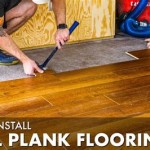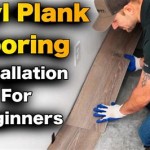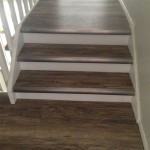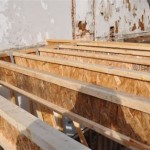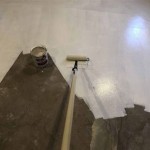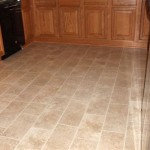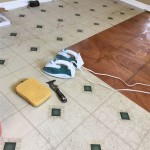How To Remove Sticky Stuff From Wood Floors
Wood floors, celebrated for their warmth and aesthetic appeal, are a common feature in many homes. However, their smooth surfaces can become magnets for sticky substances. Whether it's residue from spilled food, adhesives, tape remnants, or hardened gum, dealing with these sticky situations requires careful techniques to avoid damaging the finish or the wood itself. This article provides a comprehensive guide on effectively removing sticky substances from wood floors, detailing various methods and preventative measures.
Understanding Wood Floor Finishes
Before attempting any cleaning method, it is crucial to understand the type of finish on the wood floor. Common finishes include polyurethane, varnish, lacquer, shellac, and wax. Polyurethane is a durable, water-resistant finish often found on modern wood floors. Varnish offers similar protective qualities. Lacquer is known for its fast-drying properties but is less durable than polyurethane. Shellac creates a warm, glossy finish, while wax is a traditional finish that provides a soft luster but requires regular maintenance.
Identifying the finish is essential because different finishes react differently to various cleaning agents. Using an inappropriate cleaner can dull, scratch, or even strip the finish, leaving the wood vulnerable to damage. A simple test can help determine the finish type: in an inconspicuous area, apply a small amount of denatured alcohol. If the finish becomes soft or tacky, it is likely shellac or wax. If the finish remains unaffected, it is probably polyurethane, varnish, or lacquer.
Effective Methods for Removing Sticky Residue
Several methods can be employed to remove sticky substances from wood floors, ranging from gentle approaches to more aggressive techniques. The choice of method depends on the type and amount of residue, as well as the type of floor finish.
Gentle Cleaning Solutions
For light, fresh spills or residues, starting with the gentlest methods is advisable. Warm water and a soft cloth can often dissolve and lift away sticky substances without harming the floor's finish. Dampen the cloth with warm water and gently rub the affected area in a circular motion. Avoid using excessive water, as it can seep into the wood and cause warping or staining.
If warm water alone is insufficient, a mild dish soap can be added to the water. Ensure the dish soap is pH-neutral and free of harsh abrasives. Add a small amount of soap to the warm water and mix well. Dip the cloth into the soapy water, wring it out thoroughly, and gently scrub the sticky residue. After cleaning, use a separate clean, damp cloth to rinse the area and then dry it completely with another clean cloth.
Another effective gentle solution is a mixture of equal parts white vinegar and water. Vinegar's mild acidity can help dissolve many types of sticky residue. Apply the solution to the affected area, let it sit for a few minutes, and then wipe it away with a clean cloth. As with soapy water, rinse the area with a clean, damp cloth and dry thoroughly.
Heat Application
Heat can be a valuable tool for softening and removing stubborn sticky substances. A hairdryer can be used to gently warm the residue, making it easier to scrape or wipe away. Hold the hairdryer a few inches away from the floor and move it back and forth to avoid overheating any one spot. Once the residue has softened, use a plastic scraper or a soft cloth to remove it.
Alternatively, an iron can be used to apply heat, but this method requires extra caution. Place a clean cotton cloth or paper towel over the sticky residue and then gently press the warm iron over the cloth. The heat from the iron will transfer to the residue, softening it and causing it to adhere to the cloth. Check the cloth frequently and replace it as needed. Avoid using the iron directly on the wood floor, as this can cause burns or damage to the finish.
Solvent-Based Cleaners
For particularly stubborn or hardened sticky residues, solvent-based cleaners may be necessary. However, these cleaners should be used with caution, as they can potentially damage the wood floor's finish. Always test the cleaner in an inconspicuous area first to ensure it does not cause discoloration, dulling, or other damage.
Mineral spirits is a common solvent-based cleaner that can effectively dissolve many types of adhesives and residues. Apply a small amount of mineral spirits to a clean cloth and gently rub the affected area. Allow the mineral spirits to sit for a few minutes to soften the residue, and then wipe it away with a clean cloth. Follow up with a thorough cleaning using warm water and a mild dish soap to remove any remaining mineral spirits.
Another option is rubbing alcohol (isopropyl alcohol). It is generally less aggressive than mineral spirits and can be effective for removing certain types of sticky residues, such as tape remnants or gum. Apply rubbing alcohol to a clean cloth and gently rub the affected area. Allow it to sit for a few minutes, and then wipe it away with a clean cloth. As with mineral spirits, clean the area with warm water and a mild dish soap afterward.
Commercial adhesive removers are available at hardware stores and home improvement centers. These products are specifically formulated to dissolve adhesives and sticky residues. Follow the manufacturer's instructions carefully and always test the product in an inconspicuous area before applying it to the entire affected area. These removers often contain strong solvents, so ensure adequate ventilation and wear gloves during application.
Mechanical Removal
In some cases, mechanical removal may be necessary to dislodge stubborn sticky residues. This involves using a tool to physically scrape or lift the residue from the floor. A plastic scraper is a safe option for most wood floors. Avoid using metal scrapers, as they can easily scratch the finish.
Hold the plastic scraper at a low angle and gently scrape the residue from the floor. Use a slow, steady motion and apply even pressure. If the residue is particularly hard, try softening it with heat or a solvent-based cleaner before scraping. After removing the bulk of the residue, clean the area with warm water and a mild dish soap to remove any remaining traces and residue.
For extremely stubborn residues, a razor blade scraper can be used, but only with extreme caution. This tool can easily scratch the finish if not used properly. Only use a razor blade scraper if other methods have failed and if one is comfortable using it with precision. Hold the scraper at a very low angle and use short, controlled strokes. After removing the residue, thoroughly clean the area and inspect it for any scratches or damage.
Preventative Measures
Preventing sticky substances from adhering to wood floors is often easier than removing them. Simple preventative measures can significantly reduce the likelihood of sticky messes and the need for extensive cleaning.
Use rugs and mats in high-traffic areas, such as entryways, kitchens, and dining rooms. These floor coverings can protect the wood floor from spills, dirt, and other debris that can contribute to sticky messes.
Clean up spills immediately. The longer a spill sits on the floor, the more likely it is to become sticky and difficult to remove. Keep cleaning supplies readily available to quickly address spills as they occur.
Avoid using tape directly on the wood floor. If tape is necessary, use low-tack tape specifically designed for delicate surfaces. When removing tape, peel it off slowly and carefully to minimize the risk of leaving behind residue.
Regularly sweep or vacuum the wood floor to remove loose dirt and debris. This helps prevent dirt and debris from becoming embedded in sticky residues, making them even more difficult to remove.
Consider applying a protective coating to the wood floor, such as a wax or polish. This can create a barrier between the floor and sticky substances, making them easier to wipe away.
By understanding the nature of wood floor finishes, employing appropriate cleaning methods, and implementing preventative measures, one can effectively remove sticky substances from wood floors and maintain their beauty and longevity.

First Aid Remove Sticky Residue Simple Decorating Tips

How To Remove Glue From Wood Floors Pete S

4 Ways To Remove Adhesive From A Hardwood Floor Wikihow

How To Remove Sticky Residue From Hardwood Floors

4 Ways To Remove Adhesive From A Hardwood Floor Wikihow

4 Reasons Your Floors Are Sticky And How To Fix Them

First Aid Remove Sticky Residue Simple Decorating Tips

4 Ways To Remove Adhesive From A Hardwood Floor Wikihow

How To Remove Sticky Residue From Hardwood Floors

How To Remove Sticky Residue From Hardwood Floors Diy Hometalk
See Also
